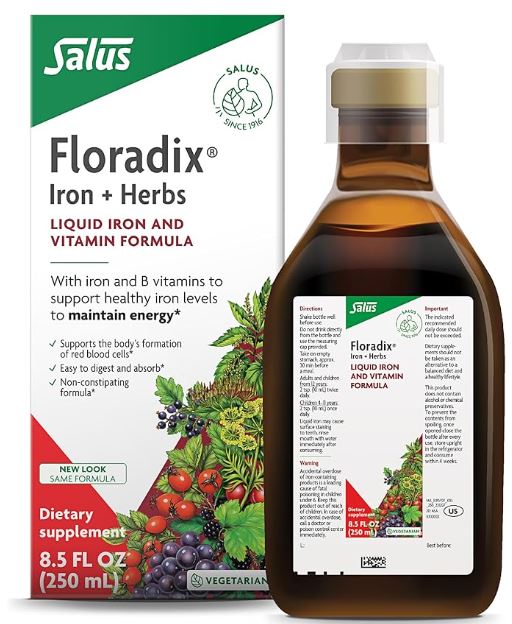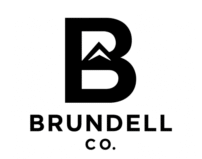Iron deficiency is one of the most common and often overlooked health challenges—especially among women. In this guide, you’ll learn how to treat iron deficiency naturally using a holistic approach that supports absorption, energy, and whole-body wellness.
We’ll explore what causes low iron, how to support healthy hemoglobin levels naturally, and which products can truly help. Whether you’re navigating fatigue, brain fog, or nutrient absorption issues, you’ll find practical strategies here that reflect a holistic, root-cause approach.
Quick Answer: How to Treat Iron Deficiency Naturally
- Eat iron-rich foods: red meat, lentils, spinach, pumpkin seeds.
- Pair with vitamin C: citrus, bell peppers, or tomatoes boost absorption.
- Support digestion: avoid coffee, tea, and calcium at meals; add probiotics if needed.
- Use gentle supplements: liquid iron formulas (like Floradix) are often better tolerated than pills.
Most people see improvement in 4–12 weeks with consistent food + gut support. Always confirm deficiency with a blood test before starting supplements.
Recommended Natural Iron Supplement
Floradix Liquid Iron + Herbs
A gentle, plant-based liquid iron made with spinach, nettle, and vitamin C for better absorption. Easier on digestion than pills and trusted worldwide.

What Causes Iron Deficiency?
Iron is essential for producing hemoglobin, the protein in red blood cells that carries oxygen. Without enough iron, your body can’t deliver oxygen effectively, leading to fatigue, shortness of breath, weakness, and more.
Common causes include:
- Menstrual blood loss
- Low dietary intake of iron-rich foods
- Digestive issues that impair absorption
- Pregnancy or rapid growth periods
- Chronic stress or inflammation
But the solution isn’t always to take a high-dose supplement and hope for the best. Instead, start with food, support your gut, and layer in tools strategically.
Iron-Rich Foods That Help Correct Iron Deficiency
Start by eating iron-rich foods you actually enjoy—they’re the foundation to managing iron deficiency naturally through nutrition.
- Heme iron (animal-based): beef, liver, poultry, and eggs
- Non-heme iron (plant-based): lentils, tofu, chickpeas, spinach, pumpkin seeds
To get more from non-heme iron, always combine it with a source of vitamin C like bell peppers, oranges, lemon juice, or strawberries. For example:
- Add lemon to sautéed greens
- Pair lentils with fresh tomato and herbs
- Top a spinach salad with citrus dressing
Even with a clean, iron-rich diet, you could still struggle with low iron if your digestion isn’t working properly. Let’s take a closer look at what’s going on in the gut—and how to fix it.
Absorption Starts in the Gut
Even if you’re eating well, poor digestion can block nutrient uptake. That’s why it’s important to support your gut if you want to manage iron deficiency naturally. If you deal with bloating, constipation, or a history of gut issues, it’s worth supporting digestion first.
Some basics:
- Avoid calcium and caffeine at meals—these can reduce iron absorption
- Eat meals in a calm state (deep breaths before eating helps)
- Space out iron supplements from antacids and dairy
Want to dive deeper? Check out my post on activated charcoal and gut health to learn how cleansing and digestive resets may support iron uptake.
Herbs That Help Manage Iron Deficiency Naturally
Traditional herbs used for blood-building include:
- Nettle leaf – rich in iron and vitamin C
- Yellow dock – supports iron absorption and liver function
- Dandelion root – aids digestion and nutrient uptake
These herbs are commonly found in iron-supporting tonics, teas, and tinctures. Safe for daily use, they complement a nutrient-dense diet and offer a natural path to rebuilding energy. These plant-based remedies offer a gentle and effective foundation for rebuilding iron levels without harsh supplements.
What You Do Daily Matters
From sleep to stress and movement, your daily routines have a huge impact on how well your body rebuilds iron. Let’s look at what habits actually support lasting recovery.
Daily Habits to Manage Iron Deficiency Naturally
Nutrients don’t work in a vacuum. Your nervous system, sleep, and daily routines affect your body’s ability to absorb and rebuild. From an integrative lens, iron deficiency is often a signal that the body needs rhythm, recovery, and nourishment on all levels.
Try:
- Prioritizing 7–9 hours of sleep per night
- Moving daily (walking, yoga, and stretching all help circulation)
- Journaling, meditation, or breathwork to reduce stress
- Eating meals regularly—don’t skip and crash
Daily habits like sleep, stress management, and gentle movement are essential to restoring healthy iron levels in a sustainable, holistic way.
Recommended Products to Manage Iron Deficiency Naturally
If you’re looking to manage iron deficiency naturally and support blood health, here are five trusted product recommendations that align with holistic, herbal-based approaches.
- Liquid iron formula made from whole food sources
Recommended: Floradix Liquid Iron + Herbs
A gentle, plant-based iron tonic made with nettle, spinach, and rosehip. Ideal for those seeking an effective alternative to synthetic iron pills. - Herbal blood-building blend
Recommended: Herb Pharm Yellow Dock Tincture
A traditional liver and blood tonic known for supporting iron absorption and overall vitality. Can be taken alone or mixed with other herbs. - Chlorophyll concentrate
Recommended: NOW Liquid Chlorophyll
Supports red blood cell function, energy, and oxygenation. A simple way to boost plant-based nutrition and iron assimilation. - Natural mineral-rich tonic
Recommended: Plantation Organic Blackstrap Molasses
A rich source of iron, calcium, and magnesium. A time-tested natural option for daily mineral support. - Gut support for better absorption
Recommended: Garden of Life RAW Probiotics
A broad-spectrum probiotic that helps optimize digestion and nutrient absorption—including iron from food and herbs.
Which Product Should You Choose?
If you’re just starting out and want a simple, all-in-one solution, I recommend beginning with:
Floradix Liquid Iron + Herbs
This formula covers the most ground. It provides gentle, plant-based iron, includes blood-nourishing herbs like nettle and spinach, and contains vitamin C to aid absorption. It’s also easy to digest and ideal for people who want to avoid multiple supplements.
For most people, Floradix is a solid foundational choice.
When to Add More
You may consider layering in one or two additional supports based on your needs:
- If digestion is sluggish or you’re not absorbing nutrients well → Add Garden of Life RAW Probiotics
- If you’re looking for a whole-body energy boost or support oxygenation → Try NOW Liquid Chlorophyll
- If you prefer food-based options → Include a spoon of Blackstrap Molasses daily
But to keep things simple:
Start with Floradix, and see how your body responds. Then build from there if needed.
→ Learn about building a complete foundational vitamin stack in Why Most Multivitamins Don’t Work (And What to Take Instead)
Frequently Asked Questions About Iron Deficiency
What are the symptoms of low iron levels?
Fatigue, pale skin, cold hands and feet, brain fog, shortness of breath, and brittle nails are all possible signs. Some people also experience cravings for ice or clay.
Can I raise my iron levels through food alone?
Yes, if the deficiency is mild. Focus on iron-rich foods like grass-fed beef, lentils, pumpkin seeds, and dark leafy greens—paired with vitamin C for better absorption.
How long does it take to rebuild iron levels?
It often takes 4–12 weeks to feel a difference, depending on your iron status and the quality of your digestion. Consistency is key.
What’s the most absorbable form of iron?
Liquid iron supplements like Floradix are well-tolerated and gentle on digestion. Heme iron (from animal sources) is also more bioavailable than non-heme plant-based iron.
Should I take iron supplements daily?
Only if a blood test confirms you’re low. Excess iron can be harmful. Always follow the dosage on your supplement and avoid pairing it with calcium-rich foods.
Can low iron affect your mood or mental clarity?
Absolutely. Iron helps transport oxygen to the brain, and deficiency can contribute to fatigue, poor focus, irritability, and even symptoms of depression.
Does low iron cause weight gain or bloating?
Not directly—but sluggish metabolism and digestive issues linked to iron deficiency may contribute to those symptoms. Iron pills themselves can cause bloating in some people.
What should I avoid when taking iron?
Avoid calcium, coffee, or tea around the time of supplementation. These can interfere with absorption.
How do I know if my iron supplement is working?
If you’re less tired, your breathing improves, and your focus sharpens over time—that’s a good sign. Blood tests are the most accurate way to measure progress.
Closing Thoughts
Iron deficiency is more than just feeling tired—it’s your body asking for nourishment, rhythm, and support. By addressing digestion, eating intentionally, and choosing the right supplements, you can rebuild your energy from the inside out. When you choose to manage iron deficiency naturally, you’re not just treating a symptom—you’re honoring your body’s deeper need for balance and healing. If you’re on a journey to heal holistically, you’re in the right place. Stay tuned for more tools, product guides, and protocols to help you thrive with confidence and clarity.
Sources
- National Institutes of Health – Iron
- World Health Organization – Anaemia
- CDC – Iron and Iron Deficiency
Health Disclaimer
The information provided in this article is for educational purposes only and not intended as medical advice. Always consult your healthcare provider before starting new supplements or making major dietary changes, especially if you are pregnant, nursing, or managing a health condition.
Devin Brundell is the founder of Brundell Co., a wellness platform dedicated to natural healing, lifestyle medicine, and intentional living. He holds a Bachelor’s degree in Business Management from Southwest Minnesota State University (SMSU) and a Bachelor’s in Holistic Health Sciences from Quantum University. Devin is also finalizing certification as a Board Certified Holistic Health Practitioner through the AADP. His mission is to empower others to reclaim health through practical tools, clean living, and purpose-driven change — one intentional choice at a time.

Hey There. I found your blog using msn. This is an extremely well written article. I will be sure to bookmark it and return to read more of your useful info. Thanks for the post. I will definitely return.